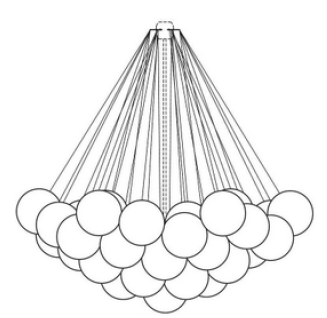The UK CAT’s Judicial Output in Damages Litigation and Collective Redress Claims After the UK Supreme Court Ruling in Merricks
This is an exciting time to be involved in competition law litigation in the UK. There are numerous claims before the specialist competition court in the UK and, in particular, it is notable that we are witnessing a surge in applications under the new consumer collective opt-out redress provisions introduced by the Consumer Rights Act 2015.
This blog outlines the outcomes of an analysis of the case law of the Competition Appeal Tribunal (CAT) in relation to private damages actions in the UK after the seminal ruling by the Supreme Court in December 2020 in the ‘ongoing’ Merricks
There has already been considerable academic literature on the background institutional context for the enforcement of competition law generally and the ways in which the UK has sought to facilitate and encourage private enforcement of competition law, in particular through the Competition Appeal Tribunal. Nonetheless, a brief precis is merited here to appreciate the recent case-law. The Competition Act 1998
The Merricks Supreme Court ruling was a watershed moment in the development of competition law collective redress in the UK and, following that ruling, the CAT has had to deal with a plethora of applications for certification and CPOs (involving many new claims and some of which had been registered and put on hold awaiting the outcome of the Supreme Court ruling).
Merricks sought to bring proceedings on behalf of a class defined as individuals who between 22 May 1992 and 21 June 2008 purchased goods and/or services from businesses selling in the UK that had accepted Mastercard cards provided those individuals were a) resident in the UK at the time and b) aged 16 years or over. The class was considered to be around 46.2 million people in a claim for an aggregate sum of circa £14 billion including interest based on Mastercard’s setting of the multilateral interchange fee which applied as a fall-back between banks in the UK. The application was not certified by the CAT. The case failed in the CAT as the applicant had failed to put forward: 1) a sustainable methodology to be applied in practice to calculate a sum which reflected the aggregate of the individual claims; and 2) a reasonable and practicable means for establishing the individual loss to be used a basis for distribution.
On appeal, the Court of Appeal rejected the CAT’s reasoning and adopted a more purposive approach to certification proceedings, recalibrating the process in the balance of potential collective redress applicants. The Supreme Court delivered its ruling in the subsequent appeal in December 2020, and a majority judgment upheld the Court of Appeal and returned the case to the CAT to reconsider the CPO application in light of its findings. Lord Briggs emphasised: ‘Collective proceedings are a special form of civil procedure for the vindication of private rights, designed to provide access to justice for that purpose where the ordinary forms of individual civil claim have proved inadequate for the purpose’. The most serious of the errors of law by the CAT concerned the methodology and evidence to calculate damages at trial:- in fact a broad brush approach was appropriate in estimating damages to be awarded, particularly where evidence was limited or incomplete. Furthermore, on the issue of the distribution of aggregate damages, the CAT had erred in law in deeming the compensatory principle to be essential for determining the outcome of that process. The CAT subsequently certified the application (subject to the exclusion of deceased persons and a claim for compound interest), and authorised Merricks as the class representative.
Since the Merricks Supreme Court ruling until the end of August 2023, in total there have been 84 rulings by the CAT (including its key judgments on CPO applications), 7 by the Court of Appeal and one by the Supreme Court.
There have been 16 subsequent rulings in relation to the Merricks dispute alone in this period, covering a range of issues.
Including the Merricks dispute, several rulings have concerned procedural or preliminary issues in relation to claims before the CAT. Particularly interesting were 2 rulings in relation to funding and in particular disclosure regarding funding arrangements, first in Kent v Apple
In relation to substantive judgments by the CAT where it is not dealing with an application for a Collective Proceedings Order (CPO), probably the most important judgment in this category was delivered In Royal Mail Group Ltd v DAF Trucks Ltd
The amended s47B of the Competition Act provides for the CAT to make a CPO in relation to a claim only on the basis that there is: an authorised representative; the claims raise the same, similar or related issues of fact or law; and, are suitable for collective proceedings. A CPO must include (a) authorisation of the person who brought the proceedings to act as the representative in those proceedings; (b) a description of a class of persons whose claims are eligible for inclusion in the proceedings; and, (c) specification of the proceedings as opt-in collective proceedings or opt-out collective proceedings. The relevant certification process provision is set out in Rules 77-79 of the Competition Appeal Tribunal Rules 2015. Rule 78 deals with the Authorisation condition and Rule 79 with the Eligibility condition. In this context, the CAT has adopted and relied on the test developed by the Canadian Supreme Court in Pro-Sys Consultants v Microsoft ([2013] SCC 57
There have been 11 rulings (excluding Merricks) on applications for CPOs in the relevant period, with mixed success. The rulings as follows, are available on the CAT’s website
There is the possibility of an appeal from the CAT to the Court of Appeal (or the Court of Session In Scotland /Court of Appeal in Northern Ireland)) and thereafter on to the Supreme Court under s49 of the Act, either on a point of law or from a decision as the amount of an award of damages or other sum (other than costs or expenses). However, the process is more complicated as the CAT rules require permission to appeal from the CAT or the appropriate court, and during the period, in the vast majority of rulings, the CAT refused permission to appeal.
There have been eight appeal judgments delivered during the relevant period, most of which were unsuccessful. Potentially the most significant appeal judgments arose in Paccar Inc/DAF Trucks and others V RHA /UKTC, where there was an appeal judgment by the Court of Appeal subsequently overruled by the Supreme Court in relation to the issue of the legality of third-party litigation funding arrangements (see Kluwer Competition Law Blog here). The Supreme Court majority judgment
There are several recurring themes and issues arising from the case law on private damages litigation during this short period following the Supreme Court’s seminal ruling in Merricks in December 2020.
It is clear that the CAT engages in active case management of all disputes to seek to ensure efficient and relatively speedy resolution of any issues and to enhance transparency. The issue of litigation funding has been important and relevant to a number of rulings: firstly, where parties have sought disclosure of funding arrangements; secondly as part of the CPO certification assessment of the balancing of cost/benefits, where the CAT has demonstrated real engagement with the issues and also a clear appreciation of the practicalities involved in initiating mass claims and the need for third party funding. This was echoed by the Court of Appeal, but the system has potentially been jeopardised by the subsequent Supreme Court ruling, which has at least ensured that litigation funders are reflecting on their funding mechanisms to seek to ensure they are not compromised by that ruling. The case law has highlighted the CAT’s general acceptance of the significance of both opt-out and aggregated damages mechanisms. Nonetheless, it is notable that in two cases, the CAT certified the action on an opt-in rather than an opt-out basis and when certifying on an opt-out basis, the CAT has distinguished between UK and non-UK domiciled claimants, with that part of the claim related to the latter being certified only on an opt-in basis.
The recent CAT case law evidences the increasing number of both abuse-based claims and stand-alone collective opt-out claims, with a considerable degree of overlap between these two sub-categories claims before the CAT. This is interesting and significant given the prevalence of business claims over the initial 10-15 years of the CAT’s existence, primarily in follow-on actions in relation to prior European Commission Article 101 TFEU infringement decisions involving price-fixing cartels.
The more recent period evidences a real change, following the Consumer Rights Act 2015, to more large-scale consumer redress claims, utilising the opt-out model advantages allied with the availability of third-party litigation funding. This has apparently encouraged and facilitated multiple mass stand-alone collective claims, in relation to abuse of dominance, and this has featured significantly in relation to very big business players in various tech and digital markets, for instance, Alphabet and Apple. Clearly, despite concerns about a post-Brexit exodus of international competition law claims from the CAT, the competition litigation market remains buoyant in the UK.
________
[1] For a fuller discussion, see Rodger, ‘An analysis of the CAT case-law on private damages actions following the Supreme Court in Merricks’, Global Competition Litigation Review, forthcoming.




